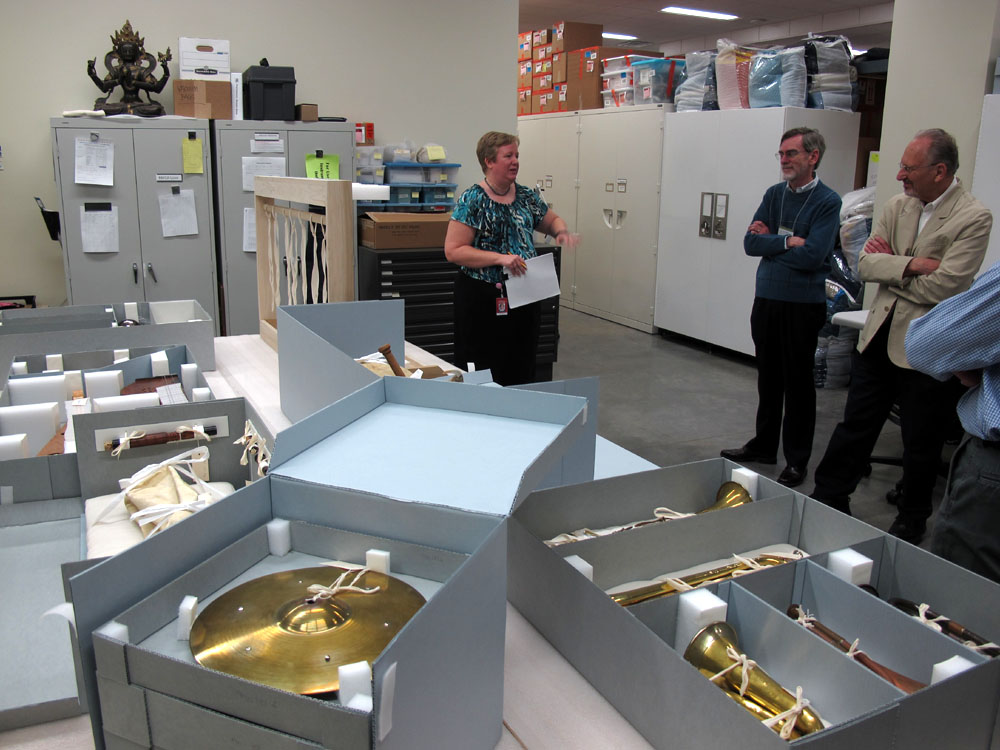As I mentioned last week, I just attended the annual conference of the American Musical Instrument Society at the brand new Musical Instrument Museum of Phoenix, Arizona. I haven’t been to the conference since 2003 in the U.K., so was good to connect with the group again. If you’re interested in serious musical instrument scholarship or want to connect with the key museum curators, collectors and researchers in the U.S., the Society is well worth joining. And as much as there is to learn from the various members, they are just as keen to learn from the rest of us about the less represented topics – especially guitars and other “popular” instruments. I’m slowly making my own impact.
They hold the conference in a different city each year, usually based around some institution (or 2) with a significant collection of instruments. I was hoping that they’d meet at the Phoenix museum as soon as feasible, as it gave me the excuse to get out and see it sooner than later.
If you haven’t heard about it, here’s my nutshell version: An unprecedented feat, it is a brand new museum created and built from scratch in just a few short years, opening last year with almost 10,000 musical instruments. Although there are a lot of nice music-only museums scattered about the globe, there is nothing quite on the scope of this. It is the brainchild of founder Bob Ulrich, the retired CEO of Target stores. The story goes (I’m paraphrasing) that he was in Belgium about to plunk down $150 million for some priceless painting for his art collection, when a friend said something along the lines of “You know, for the same amount, you could buy the equivalent of the entire Brussels Musical Instrument Museum…”. And the light bulb went off. He assembled a team, chose Phoenix as an ideal location for travelers to get to, and they hit the ground running. Whatever likes and dislikes we AMIS members had about the results, we were all unanimously blown away by the sheer magnitude and success of such a monumental, seemingly-impossible project (still a work-in-progress).
This is truly a museum “for the people.” The basic idea is the world’s first complete “global” museum of music and instruments, with a focus on “living traditions” – meaning a significant amount concerning music that is being made now across the planet. It is thus arranged by country (breaking off into cultures where feasible), and they are missing just 5 at the moment. There were not only thousands of instruments I had never seen or heard of, there were several countries new to me (I’m a bit behind on my Geography, obviously).
I’ll add more details in upcoming blogs. Meanwhile, we ourselves hit the ground running first thing Wednesday morning with tours of the Conservation Lab and Storage areas.

A bit like the Natural History museums where you can watch paleontologists actually working on the bones, this area is designed so that the public can see, 7 days a week, staff at work inspecting, cleaning and restoring various instruments.

Technician working on a mbira…

…with more African treasures queued up.

Like our own house, there’s never enough storage space.

Aisle after aisle of bagged and tagged instruments for eventual evaluation.

Every item not on display will eventually get its own custom, fitted storage box.






Wow, those guys look like PhDknuts!